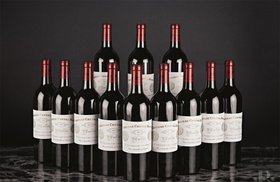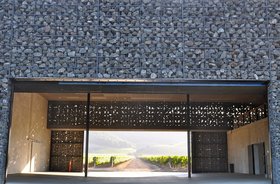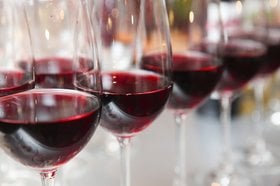Sweet White Wine (Styles, Prices, Best Bottles to Buy 2025)
With their delightful floral, fruity, and honeyed flavors, sweet white wines are known to be easier on the palate, especially for those new to wines.
Some of them can even be stored in your wine cellar for decades, making them an attractive long-term investment as well!
In this article, we’ll look at what makes a wine sweet or dry, the differences between sweet and fruity wine, the various sweet white wine styles, and the best sweet whites to buy now. Also discover the easiest way to buy them!
Further reading
- Explore the fascinating world of Dry White Wines and 10 bottle recommendations.
- Also, check out the Top White Wine Brands from around the world.
What is “Sweetness” in Wine and How Is it Determined?

Wine sweetness is measured by the amount of residual sugar (RS) the wine contains. This is the naturally occurring sugars (fructose) in grapes that remain in the wine after alcoholic fermentation.
It’s measured by grams per liter, with 1% of sweetness equivalent to 10 grams per liter of residual sugar.
Yeast converts sugar into alcohol during fermentation. So, in general, the more alcohol a wine has, the less residual sugar it’ll have.
A dry wine does have some residual sugar in it, though most people can’t detect sweetness levels under 1.5%.
How do you choose a sweet wine?
A good indicator is the ABV (Alcohol By Volume). A table wine with an ABV of less than 12.5% will likely be sweet. Moscato, Asti Spumante, rose wines, and Riesling wine usually have an ABV under 10%.
How Is Sweet Wine Different from Dry Wine?
Sweet and dry wines fall at opposing ends of the sweetness scale.
In a dry wine, all the grape sugar is converted to alcohol, while a sweet wine still has residual sugar. “Off-dry” or “semi-dry” wines will have a subtle sweetness from the residual sugar, but not as much as in a sweet wine.
Next, let’s look at the best white wine bottles you should buy now.
16 Best Sweet White Wines to Try in 2024
We’ve categorized our picks based on different sweet white wine styles:
- 2015 Chateau d'Yquem, Sauternes, France
- 2009 Chateau Coutet Cuvee Madame, Barsac, France
- 1976 Egon Muller Scharzhofberger Riesling Trockenbeerenauslese, Mosel, Germany
- 1976 Joh. Jos. Prum Wehlener Sonnenuhr Riesling Trockenbeerenauslese, Mosel, Germany
- 2002 Avignonesi Occhio di Pernice Vin Santo di Montepulciano, Tuscany, Italy
- 2007 Fontodi Vin Santo del Chianti Classico, Tuscany, Italy
- 2007 Royal Tokaji Essencia, Tokaj-Hegyalja, Hungary
- 2000 Disznoko Tokaji Eszencia, Tokaj-Hegyalja, Hungary
- 2017 Peller Estates Signature Series Oak Aged Vidal Blanc Icewine, Niagara Peninsula, Canada
- 2016 Egon Muller Scharzhofberger Riesling Eiswein, Mosel, Germany
- 2007 Vinoptima Estate Noble Late Harvest Gewurztraminer, Gisborne, New Zealand
- King Frosch 'Noble Sweet' Chardonnay Spatlese, Germany
G. Other Sweet White Wines to Try
- 2006 Weingut Franz Hirtzberger Honivogl Grüner Veltliner Smaragd, Austria
- 2011 Ca' d'Gal Vite Vecchia, Moscato d'Asti DOCG, Italy
- A.R. Valdespino Toneles Moscatel Sherry, Andalucia, Spain
- 1971 C. da Silva Dalva Golden Colheita White Port, Portugal
Let’s look at each of these in detail.
A. Sauternes
Sauternes wine is made in the French region of Sauternais in Bordeaux. It is made from a combination of the Semillon, Sauvignon Blanc, and Muscadelle grape varietal affected by noble rot. This type of wine has great aging potential.
Best Sauternes wines:
- 2015 Chateau d'Yquem, Sauternes, France ($459): This 2015 vintage offers the exotic flavors of tangerine, pineapple and mango. There is a dynamic acidity and scented oaky vanilla with a finish that lasts for minutes.
- 2009 Chateau Coutet Cuvee Madame, Barsac, France ($335): The 2009 vintage is a pale lemon-gold with the scent of peach blossoms, mandarin peel, and allspice. The flavor is rich with spice and floral layers and ripe stone fruit.
B. Riesling
Riesling wines can vary from dry to very sweet, often giving off apricot and apple flavors. Some of the most popular sweet Riesling wines are made in Germany, and Alsace in France.
In Germany, sweet Riesling is classified as Spätlese, Auslese, Beerenauslese, Trockenbeerenauslese (TBA), Eiswein - from least sweet to sweetest.
Best Riesling wines:
- 1976 Egon Muller Scharzhofberger Riesling Trockenbeerenauslese, Mosel, Germany ($23,598): This vintage has a fully mature nose of dry apricot, raisin, honey, burnt sugar, crème brulee and medium-dark caramel. It has a nice balance with a long, intense finish.
- 1976 Joh. Jos. Prum Wehlener Sonnenuhr Riesling Trockenbeerenauslese, Mosel, Germany ($5,513): The 1976 vintage offers hints of sweet figs, arancini, prunes, and dark nougat. There is a fine oxidizing note on the palate with dark nuances on the long finish.
C. Vin Santo
This sweet white wine from Italy is made from the Trebbiano and Malvasia white grape variety.
Best Vin Santo wines:
- 2002 Avignonesi Occhio di Pernice Vin Santo di Montepulciano, Tuscany, Italy ($452): The 2002 vintage opens with the sweet aromas of caramel, maple syrup, candied orange zest and dried date. The smooth palate carries flavors of black cherry jam and hazelnut, closing with a long finish.
- 2007 Fontodi Vin Santo del Chianti Classico, Tuscany, Italy ($238): The 2007 vintage has a deep amber intensity, with a bouquet of rich, intense caramel, candied fruit and honey.
D. Tokaji Aszú (Tokay)
Tokaji Aszu wine has been made in Hungary’s Tokaj region since the 1600s and is the world’s oldest sweet wine. Also known as Tokay, it’s made with grapes affected by noble rot - the Furmint grape and other approved white grape varietals like Hárslevelű, Yellow Muscat or Zeta. Single varietal versions are also made.
Best Tokaji Aszú wines:
- 2007 Royal Tokaji Essencia, Tokaj-Hegyalja, Hungary ($1,472): This full-bodied Tokaji wine is beautifully balanced with a fine acidity, offering the scent of fresh apricot and tea. There is fresh apricot on the palate with dried fig and plum jam on the finish.
- 1999 Disznoko Tokaji Eszencia, Tokaj-Hegyalja, Hungary ($279): Discover the aromas of sultana and orange in this 1999 vintage with a rich note of honey and spices. Syrupy on the palate, it offers a core of acidity and the richness of dried fruit and prune.
E. Ice Wine
Ice wine, or Eiswein in Germany, in theory, can be made from any red or white wine grape that’s remained on the vine after the first frost. However, the most common grape varietal for ice wine is Riesling, Vidal Blanc and Cabernet Franc.
Best Ice Wines:
- 2017 Peller Estates Signature Series Oak Aged Vidal Blanc Icewine, Niagara Peninsula, Canada ($200): Look for a luscious mouthful of papaya, gooseberry, guava and melon in this 2017 vintage. Lingering notes of marmalade and exotic spice with butterscotch color the finish.
- 2016 Egon Muller Scharzhofberger Riesling Eiswein, Mosel, Germany ($2,573): The 2016 vintage shows aromas of concentrated fruit. Lush and piquant on the palate, with flavors of fine fruit, finishing with lime, grapefruit, and breaking slate stones.
F. Late Harvest Wine
Late harvest wines are made of grapes that have remained longer on the vine after traditional harvesting.
Best Late Harvest wines:
- 2007 Vinoptima Estate Noble Late Harvest Gewurztraminer, Gisborne, New Zealand ($294): The 2007 vintage offers the intense aroma of sultana, apricot, and fig with a touch of dates, dried mulberries, and mandarin peel.
- King Frosch 'Noble Sweet' Chardonnay Spatlese, Germany ($120): This late harvest Chardonnay grape features in this wine. It’s unoaked, full-bodied with complex flavors and a buttery overtone.
G. Other Sweet White Wines to Try
Here are some other sweet white wine varieties that you can consider.
- 2006 Weingut Franz Hirtzberger Honivogl Grüner Veltliner Smaragd, Austria ($118): This 2006 Grüner offers classic notes of apricot, snap peas, pit fruit, and cracked pepper. Rich and creamy, it has a noticeable sweetness that offsets the slight bitterness.
- 2011 Ca' d'Gal Vite Vecchia, Moscato d'Asti DOCG, Italy ($85): This 2011 sparkling wine is aromatic, juicy, and layered. Expect enticing aromas of dried flowers, Japanese citrus, mixed stone fruit, honeycomb, and wet stone.
- A.R. Valdespino Toneles Moscatel Sherry, Andalucia, Spain ($454): This sherry has a concentrated palate of raisins, spice, treacle, citrus peel, and old casks. It is very sweet with a nice acidity and savory twist.
- 1971 C. da Silva Dalva Golden Colheita White Port, Portugal ($271): This Colheita White Port offers the incredible flavors of exotic fruit like honeydew and peach, with a nice vanilla touch.
You may be wondering:
What’s the best way to buy these delectable wines?
3 Factors Affecting the Sweetness and Taste of Wine

The three factors are:
A. Wine Aroma/Smell
A wine that smells sweet or ripe is very likely to taste sweeter.
An aromatic wine (like Moscato, Riesling, and Gewürztraminer) will have sweet floral aromas. This means a Moscato wine with a tropical fruit aroma may taste sweet.
However, there are exceptions - a floral dry Riesling or the faint honeysuckle of Pinot Grigio wine that smells sweet on the nose may not taste sweet at all.
B. Wine Acidity
Don’t confuse acidity with tannin. Acidity is a flavor, while tannin is more of a sensation. Acidity gives wine that tart, sour taste and defines its crispness, as you’d notice in a Sauvignon Blanc.
That doesn’t mean that sweet white wines aren’t acidic. Acidity helps balance out the sweetness in wines. Sweet German Riesling, for example, has high acidity.
Cooler regions produce grapes with higher acidity and lower sugar content, and warmer climates have grapes with lower acidity and higher sugar content. How the winemaker produces the wine will define its final taste.
C. Tannins in wine
Tannin comes from grape skins, stems, and seeds. Most white wines aren’t produced with these grape components, so the tannin will be negligible (unless we’re talking about the rare Orange Wine or Chardonnay aged in oak barrels).
The presence of tannin is what gives you that astringent feeling in your mouth and a bitterness that makes your lips pucker (think of plain, thick, black tea).
However, the dryness in a wine has little to do with tannin. Sweet white wine can also have tannin, like Gewürztraminer, which undergoes a brief period of maceration during processing (where the grape skin remains in contact with the grape juice).
Levels of Sweetness in White Wine and Red Wine
The sweetness levels of wine range from bone dry to very sweet. Check out this wine sweetness chart to see how each one compares to its red wine counterpart:

In general, the sweetness in wine depends on the grape variety and climatic conditions as well:
- Grape variety: For example, the Muscat grape used in all Moscato wine has a naturally high sugar content.
- When the white grape is harvested: Ripe grapes will have more sugar content and lower acidity than immature grapes.
- Climatic conditions: Warmer climates often produce grapes with higher sugar content, as the heat of the sun enhances the sugar concentration.
The Difference Between Sweetness and Fruitiness in White Wine

If a wine tastes of fresh fruit or is described as “fruit forward,” it doesn’t mean it’s sweet.
It just means that a fruit flavor other than grape will be dominant when you taste it, like the green apple and pineapple taste in a dry, unoaked Chardonnay.
But some aromatic wines like Moscato are sweet and fruity as well.
Sweet White Wine Styles and How They’re Made
Sweet white wines come in different styles and are made in many different ways.
1. Unfortified Sweet Wine
Unfortified sweet white wines are produced using one of these methods:
A. Botrytis Cinerea (Noble Rot)

In this method, the botrytis fungus (noble rot) is allowed to grow on grapes that are still on the vine. The fungus absorbs the water from the grapes, causing them to shrivel, concentrating the sugars, fruit acids, and minerals.
This technique is used in sweet wine production in many regions, like Sauternes and Alsace in France and Tokaj-Hegyalja in Hungary.
B. Late-harvesting
Late-harvesting involves leaving the grapes on the vine for very long periods (from weeks to months) to naturally increase the residual sugar in the wine. The later the grape is harvested, the riper and sweeter it will be — as the water in the fruit begins to evaporate, concentrating the flavors.
Producers in Germany use this method to make dry white wine or sweet Rieslings by harvesting the grapes at different stages of ripeness.
C. Eiswein
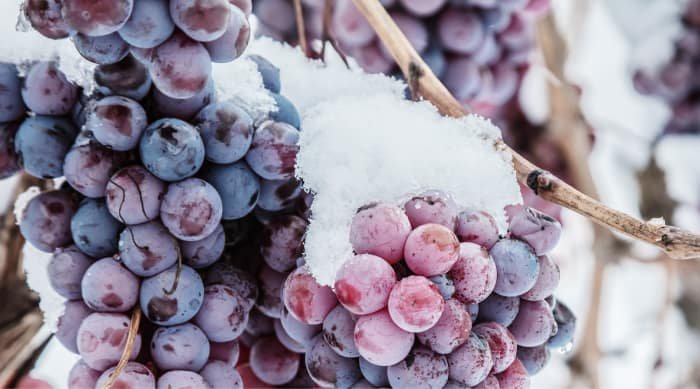
Eiswein (Ice Wine) is made with a technique in which grapes that are frozen on the vine are processed at around 20°F (-7°C). The water in the grape is frozen, while the sugar and other dissolved solids aren’t, which allows the flavors to intensify.
The frozen grapes, when pressed, produce grape ‘must’ (grape juice) that is used to make a very concentrated, sweet wine.
D. Straw Mat

Wines made with this method (for example, the Vin Santo wines from Italy) are called “straw wines.” Harvested grapes are laid on straw mats in the sun or in any place with good air circulation. The grapes develop a raisin-like texture with very concentrated sugars and flavors.
E. Fortified Dessert Wine
Winemakers create this fortified dessert wine by adding a spirit with high alcohol to the grape juice. This stops fermentation before it’s completed, retaining the residual sugar. The process is called “fortification” and results in a sweet, high alcohol wine.
Winemakers sometimes use a combination of methods to make their wines. The Tokaji Aszú, for example, is made from late-harvest grapes that are affected by noble rot.
All this talk of sweet white wine, but what food goes with something that tastes like dessert?
Serving Tips and Food Pairings With Sweet White Wine
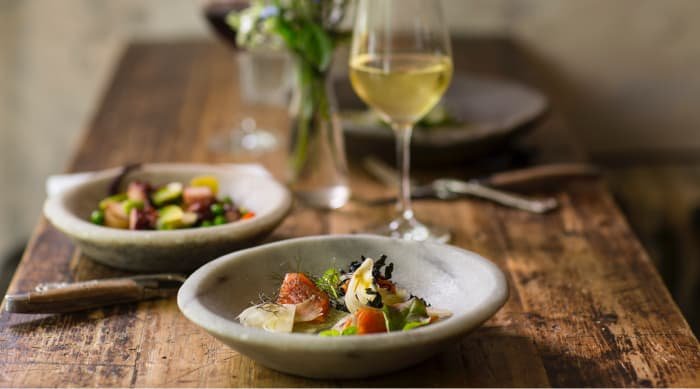
Serve sweeter white wines at temperatures between 50-59°F (10-15°C).
As for the serving glasses, you can’t go wrong with narrow dessert glasses or flutes.
For an aromatic Sauternes or Ice Wine, opt for a standard white wine glass. It’ll provide ample room for the wine to breathe and for you to swirl it before indulging in its flavors.
It’s surprisingly easy to pair your sweet white wine with food!
Here are some ideas:
- Salty foods: Try ice wine with cheese or salty, savory almonds.
- Hot and spicy: Try a low alcohol Moscato with a spicy Indian or Korean dish.
- Sour items: A high acidity, sweet white wine can work well with vinegary foods.
- Bitter bites: Think sauerkraut and Riesling.
- Desserts: Desserts with caramel or fruit work very well with a dessert wine.
That said, a dessert wine (as the name suggests) could be a perfect sweet treat to end a meal.
So what’s the best way to buy these delectable wines?
Online merchants, wine auctions, or wine exchanges may seem like the obvious answer. But you’d have to do your own research on prices, make sure the bottles are authentic, and manage the hassles of delivery and long-term storage.
Your best option would be to entrust an online wine investment company like Vinovest that can help you get hold of those rare, collectible wines.
Here’s how it works:
Invest in Sweet White Wine & Other Bottles Through Vinovest
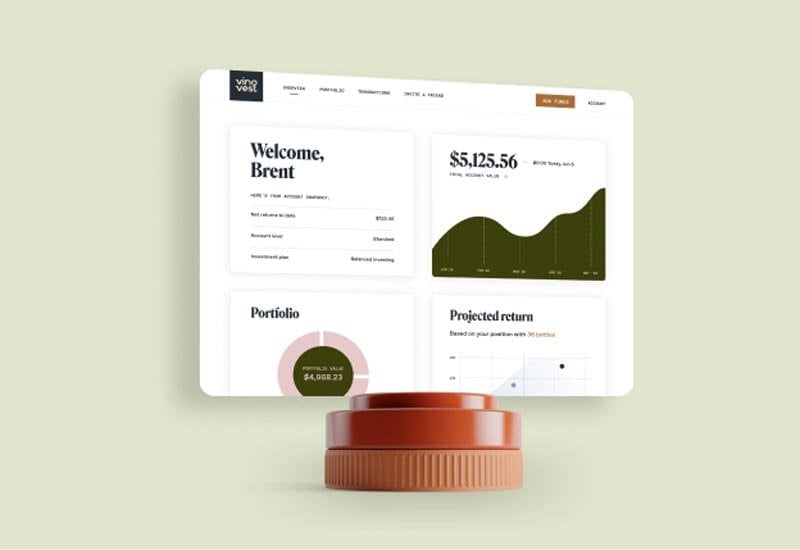
Vinovest is an online wine investment company that helps you buy, store and sell wines for long term investing or for drinking.
How it works
Follow these four simple steps:
- Go to the Vinovest website and sign up.
- Let Vinovest know your risk appetite and investment preferences through a questionnaire.
- Add funds to your account.
- View your wine portfolio online and watch it grow.
Benefits
Why Vinovest is your best option to buy the world’s best wines:
- Easy Buying and Selling: Buy and sell any wine from any part of the world easily, using Vinovest’s Artificial Intelligence (AI)-based online platform.
- Provenance and Authenticity: Have every wine bottle’s provenance authenticated and checked by Vinovest before you decide to buy them.
- Curated Portfolio: Vinovest has a professional team of Sommeliers and data scientists to curate your wine portfolio with proprietary financial models based on historical data.
- Optimal Storage: Your wines are secured in bonded warehouses under perfect conditions of light, humidity, vibration, and temperature.
- Insurance: Security cameras keep your wine bottles safe, and power back-ups ensure optimal climate control to cover emergencies. Your wine cellar is protected by Vinovest’s comprehensive insurance policy.
- Access to a Global Network: Vinovest’s global network allows access to upcoming vineyards, limited releases of rare wines, and private sales of wineries.
- Ownership: Every new wine you buy through Vinovest is yours - be it a Chardonnay, Pinot Noir from Burgundy, or a Loire Valley or Napa Valley wine from the United States.
- Easy Delivery: No worries about deliveries. Vinovest delivers to your doorstep, so you can have that prized Sauternes in hand for your next special occasion! And if you’re selling, Vinovest delivers to your buyer too.
Add a Heavenly Sweet White Wine to Your Collection!
Sweet white wines make a wonderful addition to your collection, and some varieties have great potential for aging, like a Sauternes or a Tokaji. They’re easy to drink and pair with foods for any occasion with your wine lover buddies.
While you can source your sweet white wines on your own, going through a trusted platform like Vinovest will make your life easier.
Ready to find that elusive Eiswein or Riesling minus the hassles of finding and storing one yourself?Sign up on Vinovest right away!

